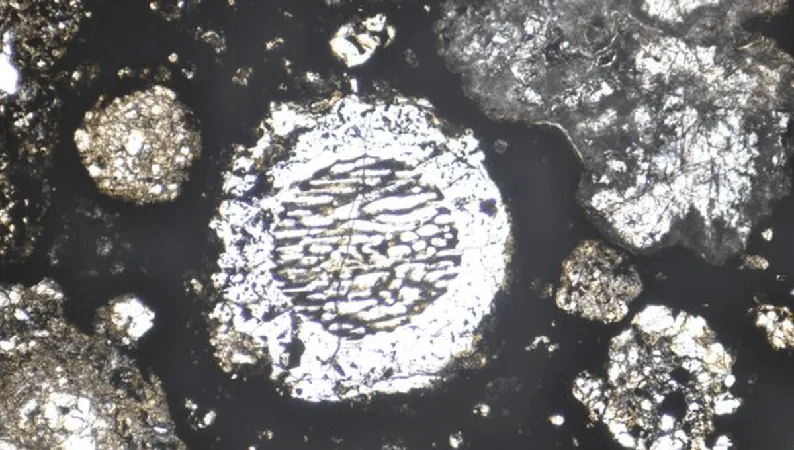
Unlocking Jupiter's Secrets: How New Research Could Reveal Its Age!
2025-08-27
Author: Daniel
The Quest to Age Our Celestial Neighbors
Determining the ages of planets is no simple feat! It wasn’t until 1953 that scientists began to pinpoint Earth's age, thanks to geochemist Clair Cameron Patterson, who analyzed lead isotopes in meteorites. Now, with Earth estimated at about 4.543 billion years, the quest continues for our fellow planetary giants.
Radionuclides: Nature's Clock
According to Adam Burgasser, an expert in Astronomy at UC San Diego, radionuclides are essential for dating planets. These unique atoms emit energy over extensive periods, functioning like natural clocks that help date everything from ancient rocks to bones.
Meteorite Insights: Clues from the Oldest Rocks
Using these radionuclides, the oldest known meteorite dates back approximately 4.57 billion years, almost aligning with the Sun's age of 4.58 billion. The rocks on our planet are a tad younger, clocking in at about 4.40 billion years, while Moon soil samples from the Apollo missions have ages reaching up to 4.6 billion years.
Counting Craters: A Challenge for Gas Giants
While methods like counting craters from meteorite impacts excel at dating rocky bodies, they fall short for gas giants like Jupiter, whose gaseous surfaces show little evidence of impacts. The real puzzle lies in dating Jupiter itself and its moons.
The Unique Findings on Jupiter's Age
Recent research dives into the fascinating world of chondrules—spherical particles formed in chondrite meteorites. These structures can potentially reveal Jupiter's formation timeline. The study suggests that these chondrules formed in high-energy collisions of planetesimals loaded with volatile materials, leading to a cascade of tiny molten “raindrops” of rock.
A Breakthrough in Understanding Chondrule Formation
Co-lead researcher Prof. Sin-iti Sirono from Nagoya University explains that during planetesimal collisions, water turned into explosive steam, shattering molten silicate rock into droplets that became chondrules. This groundbreaking model accurately reflects conditions from the early Solar System—when Jupiter itself was born!
Jupiter: The Oldest Planet?
By modeling how Jupiter formed and grew stronger, researchers found that its age aligns with previous Solar System estimates. Their simulations of chondrule characteristics matched meteorite data, suggesting Jupiter gathered gas and grew rapidly around 1.8 million years after the Solar System’s inception.
A New Perspective on Planet Formation
If these findings hold true, Jupiter emerged earlier than its planetary companions, but the study still leaves many questions unanswered. The diverse sizes and ages of chondrules suggest interactions with other gas giants like Saturn and Uranus during their formation. This new method could revolutionize how we understand the order of planet formation in our Solar System!



 Brasil (PT)
Brasil (PT)
 Canada (EN)
Canada (EN)
 Chile (ES)
Chile (ES)
 Česko (CS)
Česko (CS)
 대한민국 (KO)
대한민국 (KO)
 España (ES)
España (ES)
 France (FR)
France (FR)
 Hong Kong (EN)
Hong Kong (EN)
 Italia (IT)
Italia (IT)
 日本 (JA)
日本 (JA)
 Magyarország (HU)
Magyarország (HU)
 Norge (NO)
Norge (NO)
 Polska (PL)
Polska (PL)
 Schweiz (DE)
Schweiz (DE)
 Singapore (EN)
Singapore (EN)
 Sverige (SV)
Sverige (SV)
 Suomi (FI)
Suomi (FI)
 Türkiye (TR)
Türkiye (TR)
 الإمارات العربية المتحدة (AR)
الإمارات العربية المتحدة (AR)